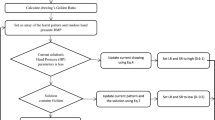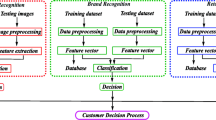Abstract
Circuit diagram is the very foundation of electrical and electronic sciences. A circuit diagram consists of various symbols called circuit components that specify the functionality of that circuit. Every day-to-day gadgets that we use are made up with a number of electrical/electronic circuits to play out their particular tasks. Till date circuit designers have to physically enter all data from the hand-drawn circuits into computers, and this procedure requires some investment in terms of time and carries mistakes with high likelihood. To this end, in this paper, we propose a method that relaxes this constraint by introducing a method for recognition of hand-drawn electrical and electronic circuit components, with both analog and digital components included. In the proposed method, the pre-processed images of circuit components are used for training and testing a recognition model using a feature set consisting of a texture based feature descriptor, called histogram of oriented gradients (HOG), and shape based features that include centroid distance, tangent angle, and chain code histogram. In addition, the texture based feature, being large in number compared to others is optimized using a feature selection algorithm called ReliefF. Classification of components is done by using sequential minimal optimization (SMO) classifier. The proposed method has been evaluated on a dataset of 20 different circuit components with 150 samples in each class. The experimental outcome shows that the proposed approach provides average 93.83% accuracy on the present database. We also compare our method with some of the state-of-the-art methods and we see that our method outperforms these methods.






















Similar content being viewed by others
References
Ahonen T, Matas J, He C, Pietikäinen M (2009) Rotation invariant image description with local binary pattern histogram fourier features. In: Scandinavian conference on image analysis. Springer, pp. 61–70
Angadi M, Naika RL (2014) Handwritten circuit schematic detection and simulation using computer vision approach. Int J Comput Sci Mob Comput 3:754–761
Avola D, Bernardi M, Cinque L, et al (2017) A machine learning approach for the online separation of handwriting from freehand drawing. In: International Conference on Image Analysis and Processing. Springer, pp. 223–232
Avola D, Bernardi M, Cinque L, Foresti GL, Massaroni C (2020) Online separation of handwriting from freehand drawing using extreme learning machines. Multimed Tools Appl 79:4463–4481
Barua S, Malakar S, Bhowmik S, et al (2017) Bangla handwritten city name recognition using gradient-based feature. In: 5th international conference on Frontiers in intelligent computing: theory and applications. Springer, Singapore, pp. 343–352
Bhattacharya A, Roy S, Sarkar N, et al (2020) Circuit component detection in offline hand-drawn electrical/electronic circuit diagram. In: IEEE Calcutta conference (CALCON 2020). IEEE, Kolkata
Bhowmik S, Malakar S, Sarkar R, Basu S, Kundu M, Nasipuri M (2019) Off-line Bangla handwritten word recognition: a holistic approach. Neural Comput Appl 31:5783–5798
Chen J, Kellokumpu V, Zhao G, Pietikäinen M (2013) RLBP: robust local binary pattern. In: BMVC
Chu A, Sehgal CM, Greenleaf JF (1990) Use of gray value distribution of run lengths for texture analysis. Pattern Recogn Lett 11:415–419
Dalal N, Triggs B (2005) Histograms of Oriented Gradients for Human Detection. In: Computer Vision and Pattern Recognition, 2005. CVPR 2005. IEEE computer society conference on. IEEE, pp 886–893
Deufemia V, Risi M, Tortora G (2014) Sketched symbol recognition using latent-dynamic conditional random fields and distance-based clustering. Pattern Recogn 47:1159–1171
Dewangan A, Dhole A (2018) KNN based hand drawn electrical circuit recognition. Int J Res Appl Sci Eng Technol 6:1–6
Dinesh R (2018) Handwritten electronic components recognition: an approach based on hog+svm. J Theor Appl Inf Technol 96:
Feng G, Viard-Gaudin C, Sun Z (2009) On-line hand-drawn electric circuit diagram recognition using 2D dynamic programming. Pattern Recogn 42:3215–3223
Hall M, Frank E, Holmes G, Pfahringer B, Reutemann P, Witten IH (2009) The WEKA data mining software: an update. ACM SIGKDD Explor Newsl 11:10–18
Jana P, Ghosh S, Bera SK, Sarkar R (2017) Handwritten document image binarization: An adaptive K-means based approach. In: 2017 IEEE Calcutta Conference (CALCON). IEEE, pp 226–230
Kononenko I, Robnik-Sikonja M, Pompe U (1996) ReliefF for estimation and discretization of attributes in classification, regression, and ILP problems. Artif Intell Methodol Syst Appl 31–40
Lakshman Naika R, Dinesh R, Prabhanjan S (2019) Handwritten Electric Circuit Diagram Recognition: An Approach Based on Finite State Machine Int J Mach Learn Comput 9:
Lee T-C, Kashyap RL, Chu C-N (1994) Building skeleton models via 3-D medial surface axis thinning algorithms. CVGIP Graph Model Image Process 56:462–478
Liu Y, Xiao Y (2013) Circuit sketch recognition. Dep Electr Eng Stanford Univ Stanford, CA
Malakar S, Sharma P, Singh PK, Das M, Sarkar R, Nasipuri M (2017) A holistic approach for handwritten Hindi word recognition. Int J Comput Vis Image Process 7:59–78. https://doi.org/10.4018/IJCVIP.2017010104
Mohanaiah P, Sathyanarayana P, GuruKumar L (2013) Image texture feature extraction using GLCM approach. Int J Sci Res Publ 3:1–5
Ojala T, Pietikainen M, Maenpaa T (2002) Multiresolution gray-scale and rotation invariant texture classification with local binary patterns. IEEE Trans Pattern Anal Mach Intell 24:971–987
Rabbani M, Khoshkangini R, Nagendraswamy HS, Conti M (2016) Hand drawn optical circuit recognition. Procedia Comput Sci 84:41–48
Sahoo S, Nandi SK, Barua S, et al (2018) Handwritten Bangla city name recognition using shape-context feature. In: 6th international conference on Frontiers in intelligent computing: theory and applications. Springer, Singapore, pp. 451–460
Sala P (2004) A recognition system for symbols of electronic components in hand-written circuit diagrams. CSC 2515-machine learn Proj rep
Yang M, Kpalma K, Ronsin J (2012) Shape-based invariant feature extraction for object recognition. In: Advances in Reasoning-Based Image Processing Intelligent Systems. Springer, pp. 255–314
Acknowledgements
We would like to thank CMATER research laboratory of the Computer Science and Engineering Department, Jadavpur University, India for providing us the infrastructural support. This work is partially supported by the PURSE-II and UPE-II, Jadavpur University projects. Ram Sarkar is thankful to DST, Govt. of India, for the grant (EMR/2016/007213) to carry out this research.
Author information
Authors and Affiliations
Corresponding author
Additional information
Publisher’s note
Springer Nature remains neutral with regard to jurisdictional claims in published maps and institutional affiliations.
Rights and permissions
About this article
Cite this article
Roy, S., Bhattacharya, A., Sarkar, N. et al. Offline hand-drawn circuit component recognition using texture and shape-based features. Multimed Tools Appl 79, 31353–31373 (2020). https://doi.org/10.1007/s11042-020-09570-6
Received:
Revised:
Accepted:
Published:
Issue Date:
DOI: https://doi.org/10.1007/s11042-020-09570-6




